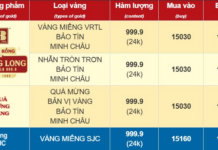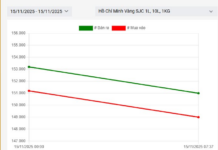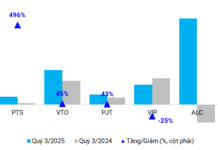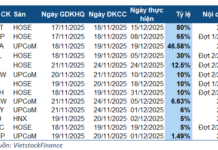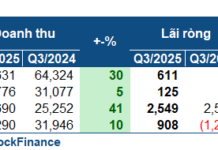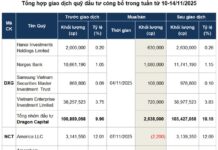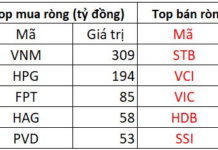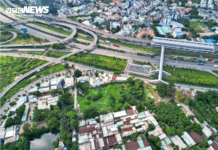Vietnam’s Airport Corporation (ACV) has released a new report on the operational split between Long Thanh International Airport and Tan Son Nhat International Airport.
ACV emphasizes the urgent need to redistribute air traffic between the two airports to alleviate congestion and optimize passenger volume management. This strategic redistribution will also enhance the efficiency of existing and new aviation infrastructure, improve service quality, ensure safety, and boost the competitiveness of southern Vietnam’s airport system and the country as a whole.
The long-term goal of this operational adjustment is to establish Long Thanh International Airport as a prominent aviation hub in Southeast Asia, thereby fostering sustainable development in southern Vietnam and the nation.
Long Thanh Airport to Take Over International Flights from Tan Son Nhat
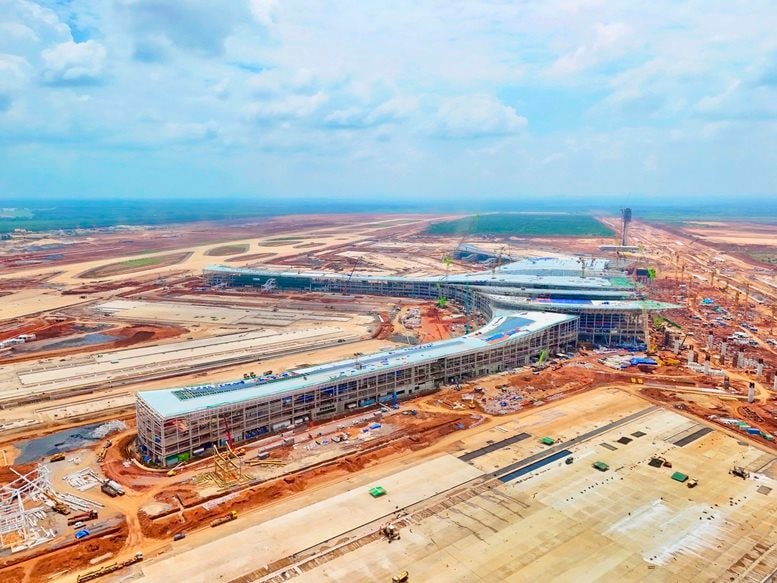
Long Thanh International Airport under construction. Photo: Construction Newspaper
According to the Master Plan and Pre-feasibility Study Report, the operational split between Long Thanh and Tan Son Nhat airports is outlined as follows:
Long Thanh Airport will primarily serve international flights and domestic flights for transit purposes, while Tan Son Nhat Airport will focus on domestic flights. Approximately 90% of international traffic will be handled by Long Thanh, leaving Tan Son Nhat with around 10% for specific international operations.
Long Thanh Airport will accommodate all international flights over 1,000 km, flights chosen by airlines, new flights that Tan Son Nhat cannot accommodate, and non-scheduled flights. In contrast, Tan Son Nhat Airport will handle flights operated by airlines using Code C aircraft (A321/320, B737, etc.) or flights under 1,000 km.
The from/to Tan Son Nhat factor must be agreed upon and reissued, separate from multilateral air transport agreements with ASEAN members and partners. Notably, the criteria for operational split will be reviewed after the first five years of actual operation.
Regarding domestic flights, Long Thanh Airport will handle 20% of the volume, including major routes and tourist destinations. In contrast, Tan Son Nhat Airport will manage the remaining domestic flights. These flights will be selected by Vietnam Airlines.
Two Operational Plans for Long Thanh and Tan Son Nhat Airports
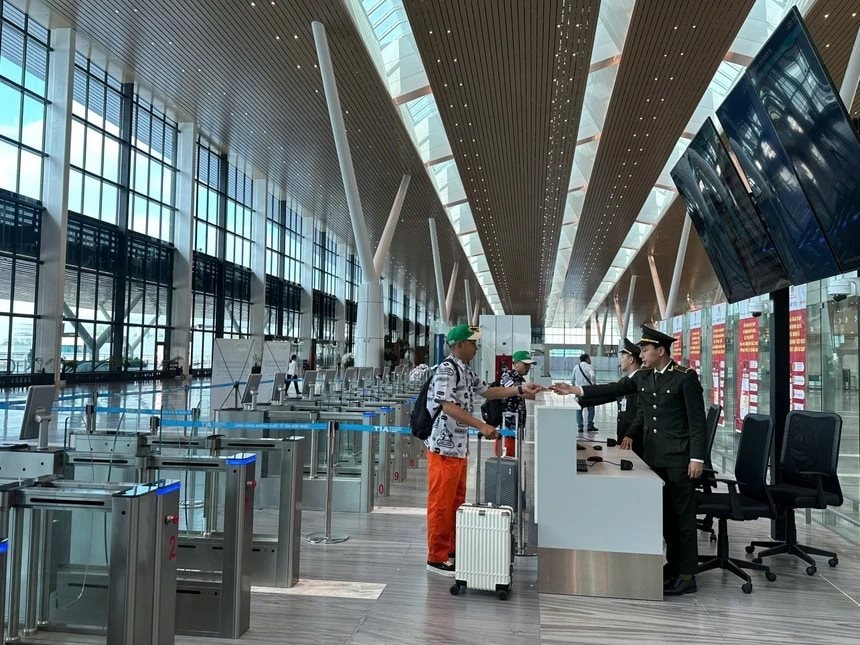
Under Plan 1, Tan Son Nhat handles 95% of domestic traffic, while Long Thanh takes on 100% of international traffic. Photo: TIA
The Long Thanh International Airport (Dong Nai) is expected to commence operations in its first phase in 2026. As Vietnam’s largest airport, it boasts a total investment of over $16 billion. The current focus is on completing the first phase, which aims to serve 25 million passengers and 1.2 million tons of cargo annually.
Leading up to this significant milestone, the Incheon Airport (IAC) consortium, the management consulting unit for Long Thanh International Airport (LTIA), has proposed two main operational plans.
Plan 1 entails Long Thanh Airport taking on all international flights, while Tan Son Nhat Airport focuses solely on domestic flights. Tan Son Nhat is projected to handle approximately 29.5 million domestic passengers annually, while Long Thanh will welcome 19.1 million international visitors and a small portion of domestic passengers (around 1.5 million) for transit purposes.
Under this plan, Tan Son Nhat retains 95% of domestic traffic, while Long Thanh handles 100% of international traffic, laying the foundation for the establishment of an international aviation transit hub in southern Vietnam.
Plan 2 involves splitting international operations between the two airports. Tan Son Nhat continues to serve domestic flights and a portion of short-haul international flights (approximately 4 million international passengers per year), mainly on routes under 1,000 km. Long Thanh Airport, on the other hand, will handle all long-haul international flights and a portion of domestic flights for transit, serving over 15 million international passengers annually.
This plan distributes flights based on flight distance and leverages the existing infrastructure at Tan Son Nhat during Long Thanh’s initial operational phase. Specifically, Tan Son Nhat will handle 20% of total international traffic, while Long Thanh will manage the remaining 80%.
According to ACV’s analysis, if Plan 1 is adopted, Long Thanh Airport is projected to serve approximately 92 million passengers by 2060. In contrast, Plan 2 would result in Long Thanh serving around 67 million passengers in the same year, a decrease of nearly 27% compared to Plan 1.
Moreover, international experience suggests that dispersing international flight operations across multiple airports in the same urban area can undermine the transit capacity and competitiveness of larger airports. Cases such as Narita (Japan) and Heathrow (UK) illustrate how the dispersal of international flight operations has significantly diminished their standing as transit hubs.
Regarding the two plans, Vietnam’s Aviation Authority and international airlines strongly favor Plan 1, which involves transferring all international flights from Tan Son Nhat to Long Thanh. This approach ensures streamlined management and efficient resource utilization. It is also considered the optimal strategy for effectively harnessing resources and establishing Long Thanh as a competitive aviation hub on par with the world’s leading airports.
Previously, on August 2, Vietnam Air Traffic Management Corporation (VATM) announced that it had coordinated the first calibration flight at Long Thanh International Airport, marking a crucial technical step towards the airport’s commercial operation. This calibration flight played a pivotal role in the technical process of preparing for the launch of one of the country’s most significant aviation infrastructure projects.
“Long Thanh Airport: A Visionary Gateway to Vietnam’s Future – Official Inauguration Slated for December 19th”
“The Prime Minister has ordered a rescheduling of the construction timeline for Phase 1 of the Long Thanh International Airport project, with the aim of inaugurating it on December 19th. This accelerated timeline underscores the project’s significance as a pivotal infrastructure development for the region.”
“Prime Minister Requests Study on Metro Line Connecting Tan Son Nhat and Long Thanh Airports”
Prime Minister Pham Minh Chinh has instructed the People’s Committee of Ho Chi Minh City to collaborate with the People’s Committee of Dong Nai province on an important project. The project entails the research and development of an underground electric railway connecting Tan Son Nhat International Airport and Long Thanh International Airport.
Assessing the Impact: Redirecting International Flights from Tan Son Nhat to Long Thanh Airport
The Ministry of Construction has issued a directive to the Vietnam Aviation Authority, urging them to engage with airlines and conduct a thorough investigation into the proposal of redirecting all international flights from Tan Son Nhat to Long Thanh Airport. The directive emphasizes the importance of evaluating the impact of this proposal and requests a formal report on the operational plan by September.






